The first step to building our Woodland Garden
Building your dream garden may start with planting a tree or your favourite shrub. For us it began by escaping our new-home subdivision and taking the leap to an older fixer-upper that provided us with the property we needed to start our dream Woodland garden.
Our woodland garden began with a pool in our neighbour’s backyard. We didn’t know it then, but life in a brand new home in the middle of the suburbs where late-night pool parties, loud teenagers and the never-ending drone of gas powered mowers was the norm, was enough to push my wife and I to extremes.
These weren’t our dreams – the pools, the parties the close proximity to neighbours.
So, it was time to sell and move into a home that, in the end was totally opposite to the one we were living in at the time.
A for-sale sign went up and before long we were in ‘our’ dream home. Well not exactly a dream home, more like a dream property. We only had one child, so my wife and I decided to go against the grain and buy a small house on a big property rather than a big house on a small property.
It was the best decision we ever made for our sanity.
In the end, we compromised a little and bought a small home (at least by 1980s standards) on a decent-size lot pushing a half acre. To say the home was a fixer-upper would be a bit of an understatement.
What does this all have to do with building a woodland garden, you ask?
Focus on the garden for long-term happiness
Our dream was never really to own a huge multi-level home. We realized we wanted to create a peaceful, natural area around us where we could enjoy nature rather than jumping in the car every weekend to go to cottage country to escape the neighbourhood noise.
The final selling factor, at least for me, was a photo album left on the table of the house left opened to a photo of a group of deer in the backyard of the very home we were touring. For many gardeners, this would be a deal breaker. For me it only made me want it more.
SOLD.
Building the woodland garden
Then the slow process of building the garden began in fits and starts. Not unlike the home, the garden, what little of it there was, needed a lot of work.
We brought in soil and mulch, planted trees and native wildflowers. Expanded the gardens and eliminated grass. Then eliminated more grass. Check out my post on the benefits of eliminating grass.
We brought in boulders, lugged hundreds of wheelbarrows of stone, pea gravel, mulch and soil into the backyard. Check out my post on the importance of using stone in the garden
My wife and I made paths, created dry-river beds in the front and the back and it continues to this day.
Check out my post on some of the DIY projects my wife and I tackled over the years.
Finally, more than 20 years later, the combination of time and a lot of hard work is turning our patch of rural suburbia into a woodland garden rather than a patch of grass surrounded by neighbouring patches of grass surrounded by forest.
Now, most mornings my dog, Holly, and I step outside on the patio and enjoy some peaceful time together before the neighbourhood wakes up.
Be sure to check out some of my other posts on putting together a woodland garden or natural garden. Ken Druse’s book The Natural Garden is a great place to start. His newer book The New Shade Garden is an excellent source of information. Or take a minutes to check out this post on the 5 best books for woodland gardening.
The birds are at home here. On any given morning, a young fox wanders through looking for breakfast and maybe a deer or two comes through and offers me a chance to photograph them before they are off for their daily adventure. I’ve watched skunks wander through the yard, rabbits, more chipmunks and red squirrels than I can count and even a lone coyote. Snakes have returned to the property after not seeing a single one for many years here. Toads, fireflies and a host of native bees and butterflies call our property home.
It’s taken a while to get here, and we know we will never be done. But we took that first step that needed to be taken.
Your first step might not be to sell your home, it might be to go out and plant your first tree, shrub or native wildflower.
So what are you waiting for? Take that first step. You never know where it will lead you.
Mulch Mania: Building a foundation for a low-maintenance garden
Building a solid foundation starts with your garden’s soil and there’s no better way to build a high-quality soil than to use mulch. Cedar mulch forms the foundation of our low-maintenance woodland garden. It’s benefits are too numerous to list but here’s a start.
A temporary alternative to natural ground cover
Good or bad, we all remember the gardens of our childhood.
I remember dry, barren earth that literally turned to sand when you held it in your hands. It was the 1960s and the only plants that grew in the front gardens were traditional purple iris.
Not that my parents didn’t try. They turned over the soil religiously revealing the darker damp soil for a few hours until the sun baked it again.
It’s hard to imagine a worse recipe for building high-quality, healthy soil. But they toiled on, sometimes adding peat moss or top soil. The ending was always the same. Dry, bleached and baked sandy soil.
The missing ingredient was, of course, mulch. I am sure it was available at that time, but it certainly wasn’t piled up in bags at every building supply, grocery and nursery store.
Today, cedar mulch is so common in our area, it’s hard to believe there are any cedar trees still standing.
Organic mulch is commonly made from bark or wood chippings, but it can also be made of grass clippings or pine needles (a popular choice in parts of the United States,) to name just a few.
Non-organic mulch is another option and another blog post but includes stone such as pea gravel, aggregates and man-made substances.
Cedar mulch is a forest byproduct made from the shredded wood of cedar trees. Compared to pine mulch, the inherent nature of cedar makes it a longer-lasting mulch in the garden.
The benefits of mulch far outweigh any argument for not using it. Not only is cedar mulch attractive, whether you choose natural-, black-, brown- or red-coloured, it has a pleasant smell for the first few weeks it is put down, helps unify the garden and better shows off the plant foliage.
Despite its obvious benefits, it’s still not unusual to see uncovered, baked earth on my daily walks, usually accompanied by the homeowners on their hands and knees pulling weeds or, God forbid, turning the soil over so they can enjoy a few hours of dark soil before the sun comes out to bake it beige again.
Mulch is the perfect backdrop for the foliage of this Pagoda dogwood, while it protects and insulates the soil below. Over time it breaks down and adds a woodsy organic material to the soil.
In many ways, mulch actually takes the place of a living ground cover.
And, although bark mulch is a great beginning to amending your soil an creating a more woodsy soild, it’s best not to consider it the finished product.
In a woodland garden, a native and natural ground cover such as wild geraniums, bunchberry or ferns are a more desirable alternative than organic mulch, but there are plenty of situations where a ground cover is not feasible at the time.
That’s where an organic mulch truly shines.
Without going into all the benefits of heavily mulching your gardens, let’s examine just a few of the reasons mulch should be high on your list when you are building your Woodland garden.
Water retention: By shading the soil with a thick layer of mulch (ideally 3 inches or more), evaporation, both from the sun and wind, is minimized.
It also helps to regulate the temperature of the soil further reducing water evaporation and giving the plants a layer of insulation that helps keep the plants’ roots cool in the summer and warm in winter.
It is important to note, however, that mulch can also act as a barrier that makes getting sufficient water to your plants’ roots more difficult. It is much more water-efficient to target the plants individually either through a drip system or by hand watering them individually.
Deep watering a plant by leaving the hose dripping at its roots for several hours will allow the water to dive deep into the ground rather than getting locked into the mulch layer or just licking the top inch of the soil.
If your garden is properly mulched, you need to water less often but when you do water, ensure you are deep watering and targeting the plants’ roots.
One of the often overlooked benefits of mulch is that it helps prevent water runoff by trapping the moisture and moving it slowly to the soil below.
During a major storm, for example, water that might traditionally just run off in one direction, flooding one area and leaving another area more or less dry, will be better constrained to the general area it fell on. The result, a more evenly irrigated garden that will retain the moisture much longer than barren earth – possibly days or even weeks.
Weed Inhibition: Everyone is striving for a low-maintenance garden. Mulch is the key ingredient to achieving that end. But, let’s not kid ourselves it can’t perform miracles, especially if it is spread too thinly over the soil.
We’ve all seen it. A layer of mulch so thin that you can see the soil through it. Using large pieces of bark rather than the shredded bark, is often the biggest culprit here.
Unlike the shredded mulch, or pine needles, the bark pieces are too large to properly cover the soil and the resulting gaps make it too easy for seeds to find their way to the soil. (If you really love the look of the larger bark pieces, consider using the shredded mulch as your primary covering and top dress with the larger pieces.)
if the ground is not covered properly, once the weed seeds germinate, pulling them out brings more soil to the surface and before you know it, your garden is covered in weeds.
The key is to block light from reaching the soil to keep the seeds from germinating.
Some seeds will germinate right in the mulch but without proper soil they are either not long-lived or easily removed because it is near impossible for them to get properly rooted in the bark medium.
Also, if you water your individual plants rather than a general watering of the entire garden, the weeds’ roots often eventually are starved of water and die off. This is especially true following a wet spring. Weeds from the previous year will sprout in the damp mulch left by snow cover, but as the mulch dries out, the seedling roots will often die off.
A common complaint against the use of cedar mulch in the garden is that it can deplete the amount of nitrogen in the soil. While this can be true, it is not something most homeowners should be worried about.
What is more worrying is the practise of piling mulch around trees and plants in a volcanic mound that is almost guaranteed to kill the plant over time.
I often see it done by unknowing city workers who like to pile mulch up the tree’s trunk as high as possible thinking they are conserving water. Do not fall into this trap. Roots of trees and plants do not benefit from mulch touching them in any way.
Keep the mulch away from the plants and, instead, create a bowl of mulch around the tree trunks or plants where the sides can hold the water or at least slow its runoff from around the plant or tree. The bowl should be larger according to the size of the tree or plant and can actually extend out to the drip line of a young tree or plant.
Front yard ideas: Embrace your garden style
Create a front garden that pleases you rather than your neighbours.
Be bold not boring in your front garden
Front yards don’t have to be boring, but fear of being different often results in front yards conforming to every other yard on the street.
And that almost always leads to a street full of boring front yards. Typically, a sea of grass, small foundation garden beds and maybe a small single tree in the middle of the yard.
It’s much better to be bold, make a statement and create a front landscape that reflects a style that makes YOU happy rather than the neighbours.
In our rather small front yard, we have worked to create a very casual woodland garden in the main area leading with a Japanese-inspired woodland garden in another part of the front yard.
In this “small front garden” all grass has been removed. Instead, there is a total of nine trees, a variety of ground covers including ferns, pachysandra, epimediums, moss, creeping phlox, foamflower and bloodroot, just to name a few. It also has several drifts of black-eyed-susans and ornamental grasses big and small, as well as many more native plants, several massive boulders, a dry river bed, two bird baths and two very prominent yellow Adirondack chairs on a small flagstone patio.
Yes, that’s a lot to pack into a smallish front yard, but it’s an example of what is possible once you remove the grass and open up your vision to a front yard that does not conform to what most homeowners consider acceptable. My immediate neighbour also removed all of their front grass and created an oasis of native, non-native plants, trees and shrubs that, together, create an exceptional habitat for a host of wildlife from mammals to reptiles, from a variety of birds to pollinators too numerous to name here.
Unfortunately, we are the minority on a street of orphaned trees growing in a sea of never ending lawns and boring foundation plantings. And, this is in an area surrounded by conservation lands and massive natural forests.
Time to rethink our front landscapes
I recognize, however, that our front woodland garden landscape design might not be for everyone. Maybe a less aggressive approach that includes some grass and sweeping gardens with a variety of tidy perennials, might suit you better. Maybe a more contemporary garden made up primarily of evergreens is something that would appeal to you more.
To enhance the overall appeal of your front yard, here are five landscaping ideas that will help transform your outdoor space into a more welcoming one.
Create a Welcoming Pathway: A well-designed pathway leading to your front door not only adds visual interest but also guides visitors to your home. Consider using natural stone pavers or colourful tiles to create a unique and inviting pathway.
Incorporate Colourful Flower Beds: Add vibrancy and charm to your front yard by planting colourful flower beds. Choose a variety of flowers that bloom at different times of the year to ensure year-round beauty. Be sure to incorporate native plants to attract local wildlife and promote biodiversity.
Install Outdoor Lighting: Softly illuminate your front yard with strategically placed outdoor lighting. Not only does it enhance the safety and security of your home, but it also adds a warm and inviting ambiance. Use path lights to highlight the pathway and accent lights to showcase architectural features or focal points. Don’t use bright lights that disrupt the lives of animals and insects that depend on darkness to survive.
Add a Water Feature: Incorporating a water feature, such as a small fountain or a pond, can create a soothing and tranquil atmosphere in your front yard. The sound of running water adds a sense of serenity and can mask unwanted noise from the street.
Utilize Vertical Space: Make the most of limited space by utilizing vertical elements. Install trellises or arbors and grow climbing plants. This not only adds visual interest but also creates privacy and shade.
This professional garden design (below) created for a Pacific Northwest garden, (see full story here) is a perfect example of what can be done when a bold approach is taken.
A landscape design or a middle-size front garden shows intensive planting including several trees, shrubs and plantings. Notice the lack of grass in the plan.
Try designing around a focal point in the garden
Once you embrace your style with courage and commitment, try to settle on a focal point in your garden.
The focus of our front yard are actually the two very yellow Adirondack chairs that, more than anything, make a statement that this is meant to be a casual place – almost our cottage in the city.
I like to think that a woodland garden, by its very nature, is a casual unpretentious landscape that conveys a message that the people who live here care about the environment, wildlife and native plants more than impressing others, including the neighbours.
More on the Environmental Benefits of a Woodland Garden.
A dry river bed and creeping phlox combine for a colourful spring display.
A Natural Approach
Allowing the creeping phlox to flow over the large boulders creates a natural feel in the front garden rather than a traditional over-manicured front garden.
It is also a front yard that is not wild and out-of-control and possibly seen as an eyesore on a street of very, very traditional front landscapes.
Our front garden is also in constant change – from the native plants in the main garden, to the annuals that fill our two window boxes.
Birds make nests in the trees, visit the bird baths on a regular basis and devour the fruit of our native serviceberry tree in early summer. Deer visit the garden to sample the plants and even the local foxes often use the area to hunt.
Our front garden in late fall showing the Japanese-inspired garden with large boulders on the left, together with the middle canopy Japanese maples, grasses black-eyed-susans and cottage-style adirondack chairs.
It may not, however, be a front yard that appeals to everyone.
So, let’s take a look at a variety of front landscapes that lie between our grassless woodland garden and a traditional front yard.
More front yard ideas: The tiny front yard
Whether it’s a cottage garden, a contemporary garden or something in between, the important thing is to embrace your style and move forward.
If you are short of space, embrace that vibe.
• Remove the grass
• Use paving or mulch to cover the entire space
• Consider using containers to grow your favourite plants
• Create one centre of interest – a bistro table and two small chairs or a small water fountain for the birds.
• Don’t be afraid to use at least a few large-leaved plants like hosta, elephant ears or a large fern to create visual interest.
• Try to keep the space simple and use natural elements as much as possible.
• The goal is not to make the garden pretty by using too much colour or unnatural materials. Bright white quartz stone rarely looks right in a garden, but pea gravel or river rock can work well. Better yet, large moss-covered boulders can be a perfect statement piece for even a tiny garden.
One of the most common situations I am asked about is what to do with a very small inner-city front garden with an existing mature tree where grass struggles to grow. The key to success here and in most difficult situations is to work with, rather than against, what nature is offering you.
In a tiny garden
My suggestion: Remove all the grass. Bring in some large boulders (not mid-size rocks) and bury them in the landscape. Please don’t let them lay on top of the soil. Boulders need to be dug in so that at least one-third is under the ground. This gives the impression that the boulders are rising out of the ground rather than placed on top of it.
Add some native ground covers, or mulch the area heavily with a pea gravel or bark mulch. Include a simple flagstone pathway, a bird bath – maybe one carved out of one of the boulders – and a small tree or large multi-stemmed shrub (maybe a serviceberry) that is trimmed up like a small multi-stemmed tree. The bird bath could be replaced over time with a bubbling rock or natural looking fountain. The moving water will help attract more birds and other wildlife.
Larger front yard covered in turf grass
A more typical surburban front yard offers more choice and more challenges.
Removing all the grass might not be an option or even a desired result.
The question to ask yourself is whether it is worth your time and effort to care for the grass, including lugging the lawn mower and other instruments of destruction from the back yard to the front yard on a weekly basis. If you plan to remove the grass, it might be best to do it over the course of several years rather than all at once.
By creating ever expanding garden islands in your existing turf, you can slowly migrate away from turf entirely, or just leave strips of grass that are easily mown with a single pass.
My suggestion: Consider a five year plan where most of the grass is slowly replaced by large garden islands. Individual islands can serve different purposes and allow you to experiment with different plants and even styles.
One island could be set up to attract birds with fruiting shrubs and an under-story tree like a Flowering Dogwood. Add some native purple coneflowers and black-eyed-susans to provide late-summer food sources for birds. Supplement these sources with annual sunflowers to add some whimsy and provide more food and habitat for birds. A bird bath and small bird feeder is a nice addition.
Another island might focus on plants that thrive in acidic soil. Once you have amended the soil to acidify it, you can begin to plant hydrangeas, blueberries, and other acid-loving native woodland plants that can be more easily grown together rather than trying to combine them with non-acid loving plants. Mulch the acidified soil with pine needles to enhance the soil and keep the plants healthy.
In another island you may want to turn your attention to edibles. Plant your favourite herbs, one or two tomato plants, your favourite garden vegetables and maybe a favourite fruiting tree like a peach or even an orange or lemon tree if you are in the warmer growing zones.
If you like the cottage/meadow look, a garden island allows you to create that look in a smaller scale rather than trying to manage a massive meadow garden that can easily get out of control. Grow all your favourite plants, but grow them in a manageable-sized garden where you can focus your energy into creating a wild but still-in-control cottage garden. More on meadow gardening here: Create a mini meadow; The making of a large meadow
The above collage (bottom right) shows a large garden island made entirely of evergreens. This is perfect to create winter interest as well as provide year round habitat for wildlife.
In conclusion: A front garden for your enjoyment
In the end, it’s important to first create a front garden that pleases you. If you can, keep in mind that your garden should not look so out of place in the neighbourhood that you are going to draw too much negative attention. That can be difficult if you are in a very traditionally minded neighbourhood. In that case it might be wise to go all out in the backyard, while you take a slightly tamer approach in the front yard.
I have read about so many homeowners trying to do the right thing only to be forced to cut down their gardens because neighbours or home owner’s associations choose to continue living in the 1950s.
If you find yourself in this situation, create a garden that pleases you most but maintains a enough of a traditional garden appearance that it does not attract too much attention.
If you are in a more progressive area, or in one that is far from your neighbours, have some fun. Go bold and create a garden for you, your local wildlife and the natural environment.
You won’t regret it.
Can I plant trees close to my house?
Creating a window into your low-maintenance Woodland Garden can be as simple as planting a tree or shrub up close to your favourite window to experience nature up close. Most gardeners have been happy to view their gardens from afar. Now is the time to consider landscaping our yards to bring our gardens indoors. Consider creating garden vignettes that incorporate a beautiful bird bath, a bird house or even better an elegant bird feeder, or water feature just outside your window for full-season interest and a window into your woodland.
Planting trees in close to your home and windows helps to give you a window into your woodland.
Trees planted close to windows create rooms with a view
You shouldn’t have to step outside to enjoy your Woodland and wildlife garden. By creating impressive views from inside your home, the garden and its wildlife always has a presence.
Whether it’s a full fledged Woodland that stretches out as far as the eye can see, or a smaller area in your garden, consider finding ways to welcome it into your home.
In winter, you’ll appreciate looking out at the birds flitting from branch to branch. In spring, you might be lucky enough to watch a pair of cardinals build a nest and raise their young.
There are plenty of ways to bring the outdoors in, but I find planting trees, shrubs, grasses, ground covers and flowers close to the windows in our one-storey house to be the best way to experience the woodland garden at all times.
Looking out and seeing birds in the branches just outside the window is such a pleasant experience compared to looking out over a sea of grass with gardens in the distance.
I also don’t worry about tree roots invading our basement. I am aware that this can and does occur at times – mostly in 100-plus year old homes with massive oak trees or maples planted very close to the home. By planting trees with less aggressive rooting systems, these problems can be averted.
A few good trees to plant near a home include birches, various forms of apple including crabapples, dogwoods, Japanese maples and hawthorn trees.
Trees to keep away from your home’s foundation include silver maple, poplars and white ash.
Our trees are far enough away that I am not concerned that they will ever get large enough to do any damage to the foundation of the home. Besides, I won’t probably be around by the time that occurs. In the meantime, I am going to enjoy feeling one with nature.
Getting up close and personal
There are many ways to get up close and personal with nature.
Some involve constructing outdoor structures … or building expensive three- and four-season rooms that reach into your garden and surround you with your woodland in a climate-controlled, mosquito-free environment.
Perfect, but often very pricey.
It’s a whole lot easier and much less expensive to simply take advantage of what’s already staring you in the face.
Existing windows and doors are an opportunity many gardeners overlook when it comes to maximizing their gardens. It’s not enough to simply look out over the garden, try to bring the woodland in close to give you an intimate window into the goings on in your garden. Birds flitting from branch to branch or a mother feeding her young just on the other side of the window provides all the entertainment you need over your morning coffee, breakfast, lunch and dinner.
Create vignettes outside your windows
Similar to indoor decorating, look to create vignettes on the outside that you can appreciate from inside.
French doors, for example, provide the perfect opportunity to create a beautiful vignette just outside the doors.
Outside our family room French door is a beautiful copper birdbath, a small concrete bench, a container full of annual flowers as well as a beautiful flowering Cornus Kousa. A small flagstone pathway gives the viewers’ eyes a view past a rose bush and into the main garden.
From the couch in the family room, I can watch a steady procession of birds at the birdbath and admire the beautiful view of the flowering dogwood. In winter the birdbath is heated to continue to provide entertainment while giving the birds vital fresh water and a bathing opportunity even in the dead of winter.
In your garden, it may be nothing more than a grouping of pots filled with colourful plants or dramatic grasses, garden art or a simple bird bath, or water feature that you can appreciate from both indoors and out.
Five ways to bring the Woodland inside:
• Spend time standing at or looking out the windows of your home in every season and dream of what you might want to view. Then make it happen
• Plant trees or clumps of trees close to your home outside windows and doors to give you intimate views of nature from inside your home.
• Plan a lovely vignette outside your favourite window.
• If you have a window overlooking a neighbour, consider planting cedars. Make sure they are either native white cedar, black cedar or a cultivar that is loose and natural feeling. Some of the cedars sold at nurseries are more ornamental and not really the best for hedging. The best cedars grow taller than a fence, provide year-round interest and attract birds both as nesting areas and food sources. Hang a small feeder nearby for even more entertainment.
• If you need new windows or doors, take advantage of the opportunity by either increasing the amount of glazing (glass) or using a French door or sliders over a standard door. Maximize your view and then create the view you dream of through landscaping.
Wise words from a professional landscaper
A landscape professional once told me that a good landscape allows people to live in it not just admire it from afar.
It’s an approach we all need to consider more carefully when we create our landscapes. Planting trees or shrubs close to windows and places where we spend the most time is a sure fire way to fully experience our gardens.
Natural tree canopies replace umbrellas
Why use a massive garden umbrella to give you shade from the afternoon sun, when a large tree canopy can do it with greater style? Plant that tree now and by the time it provides you with the canopy you desire, your existing umbrella will need replacing.
We are lucky enough to have large windows in both the front and back of our ranch-style home. In addition, to open the garden up even more, every exterior door has been converted to either have a large window or turned into a French door for maximum viewing.
To some extent, our gardens are designed around the windows.
Our large front picture windows look out onto a grassless woodland setting that includes, among other plants and trees, Japanese maples, a lovely serviceberry, fully mature Crimson and red maples as well as our neighbour’s large blue spruce trees.
But it’s our view out into the back garden that best illustrates our attempt to bring the Woodland indoors.
Creating a view: Designing a dry-river bed
After years of looking out a large dining room bay window into our back garden, it donned on me that we really needed to create an interesting view that we could appreciate year round.
The view had always begged for something special, but I could never decide how best to use the space.
Over the years, it primarily served as our main bird- and deer-feeding stations. The birds and deer provided plenty of entertainment, but it was time for a change.
Although it was completed just three years ago, it’s fair to say this project was years in the making.
It began with a plan to create a dry-river bed that connected to an existing pathway of river rock, pea gravel and flagstone stepping stones – a landscaping project my wife and I completed many years earlier. I liked the look and feel of the existing pathway and thought it would be good to bring that same feeling out into the landscape.
Since a bubbling rock has always been a dream of mine, we incorporated a small solar powered pump with a bubbling rock at the head of the dry-river bed. The idea was coming together in my mind but it needed more to make it look natural and bring it together as a cohesive landscape.
Eventually, after combing Pinterest for dry-river ideas, the concept of a bubbling rock and dry river bed running through a forest of birch trees was born.
Soon after, three clump birches were planted in the area around where the dry river bed would eventually go. The bubbling rock and dry river bed followed.
Grasses, ground covers and native flowers have been added since then to soften the hard edge of the river bed rocks and, three years later, the entire project is beginning to settle nicely into the landscape.
The birches seem happy and the branches are growing together creating a lovely birch-grove canopy over the bubbling rock and dry river bed.
Together, the tree canopy and fresh moving water attract plenty of birds, chipmunks and red squirrels that come in for a taste of the cool water rising up from the underground and spilling over the rock into the river rock below. I have even seen toads and snakes visiting the area.
Add solar lights for night views
At night, three solar-powered spotlights on the birch clumps allow us to enjoy our birch grove at all times, whether we are sitting outside or inside at the dining room table.
In fact, the lighted birch grove is the last thing I see every night and never fails to bring a smile to my face.
Now is the perfect time to consider creating vignettes outside your windows and doors to bring your Woodland garden into your home. I guarantee it’ll bring a smile to your face every day.
I would love to hear from you on how you were able to take advantage of existing windows and doors to create a dream view.
Take a few minutes to share your thoughts down below and inspire others to bring their Woodland indoors.
This page contains affiliate links. If you purchase a product through one of them, I will receive a commission (at no additional cost to you) I try to only endorse products I have either used, have complete confidence in, or have experience with the manufacturer. Thank you for your support.

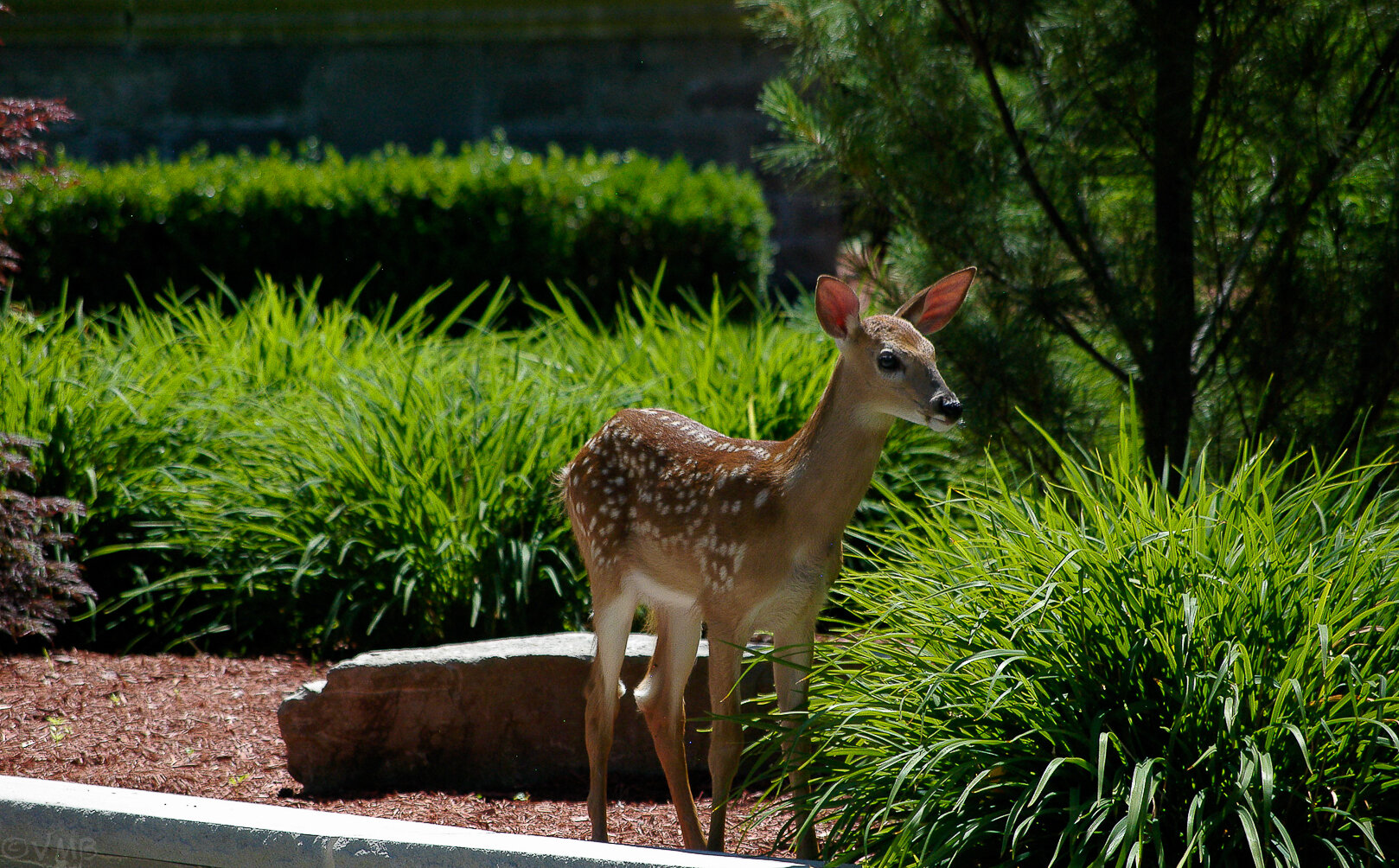
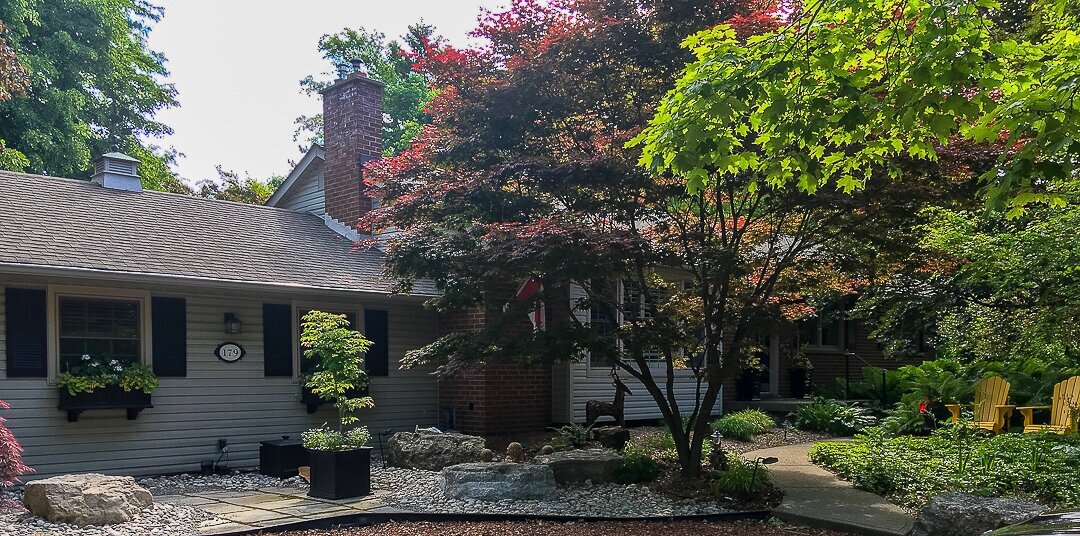
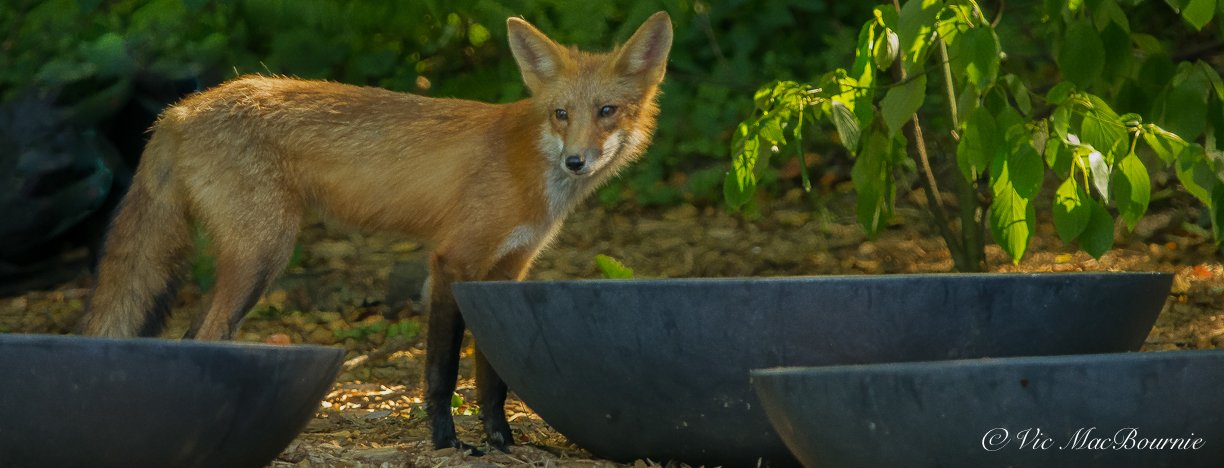

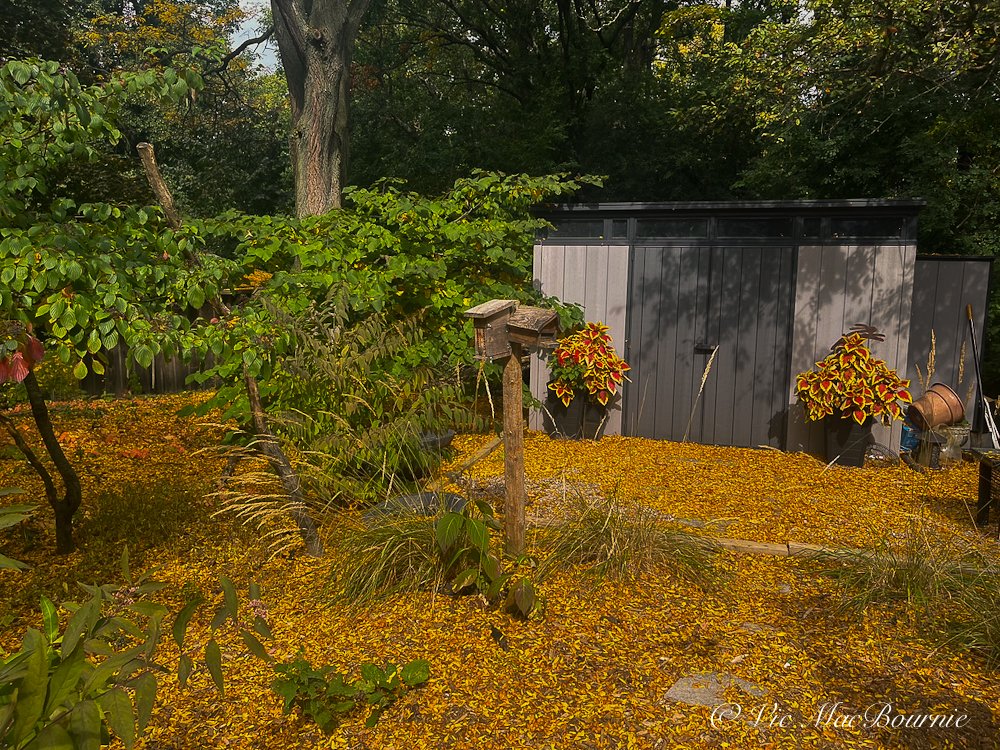

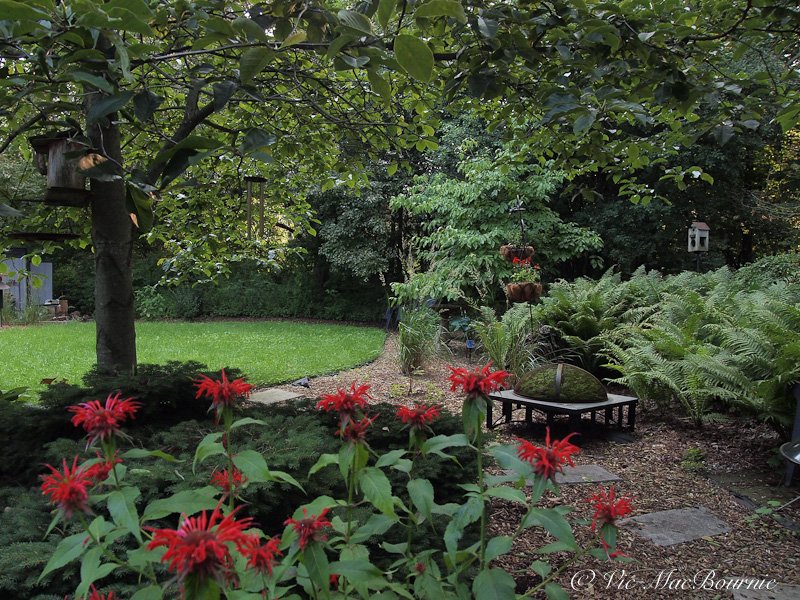

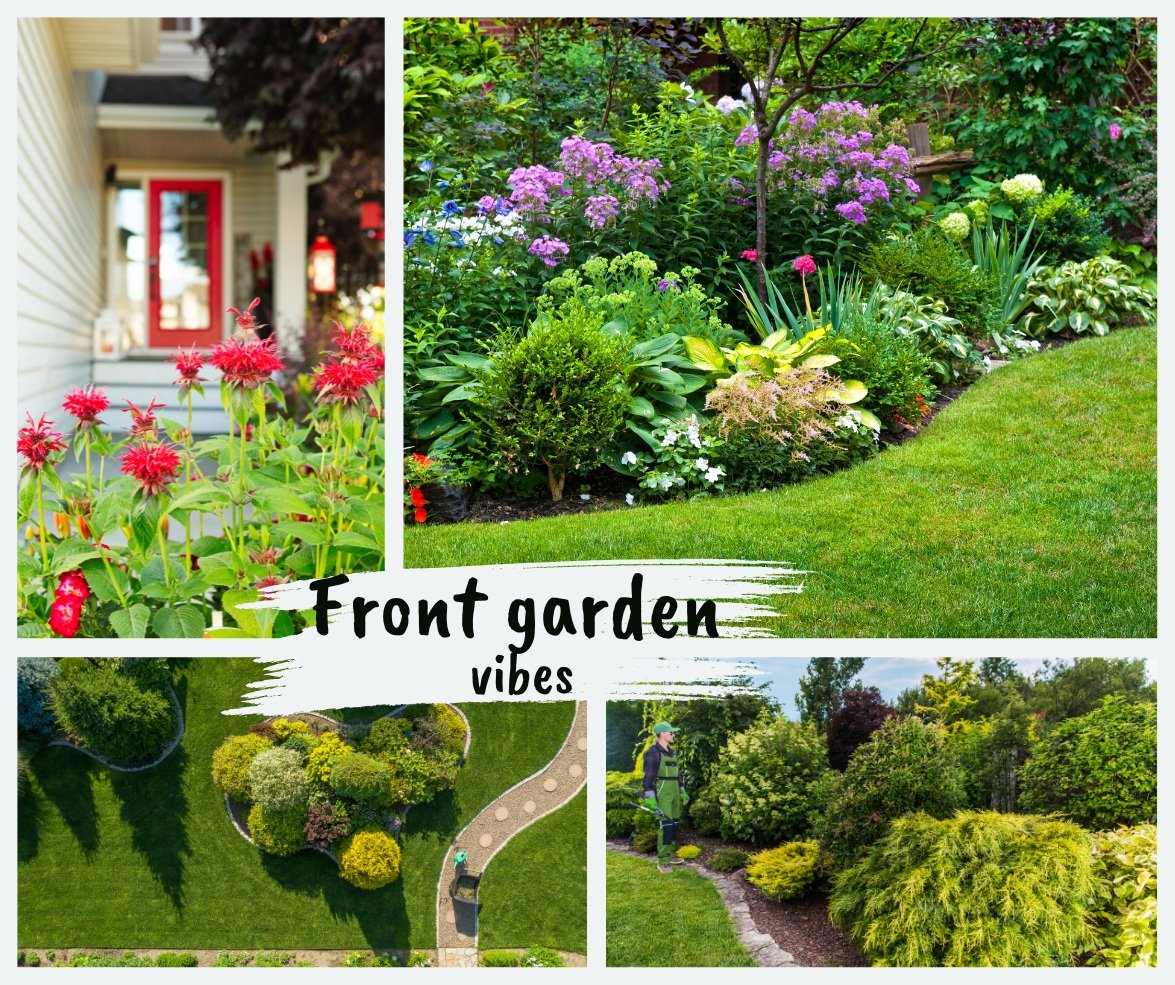









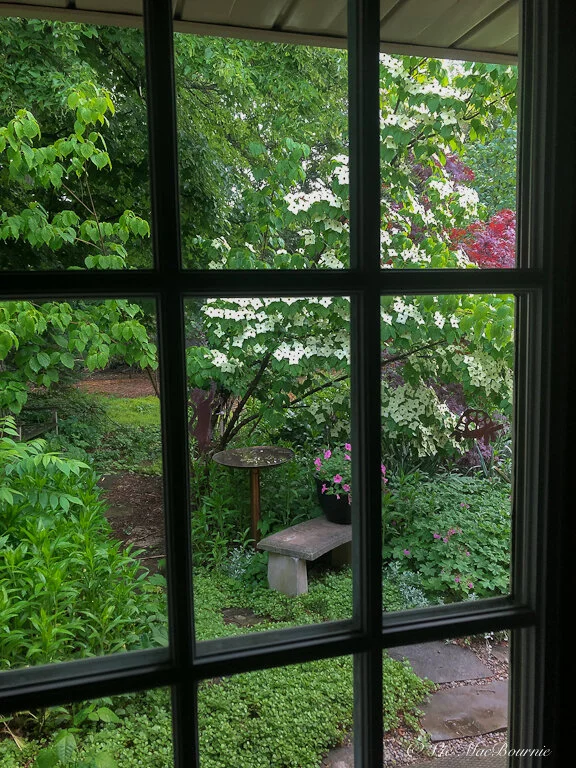
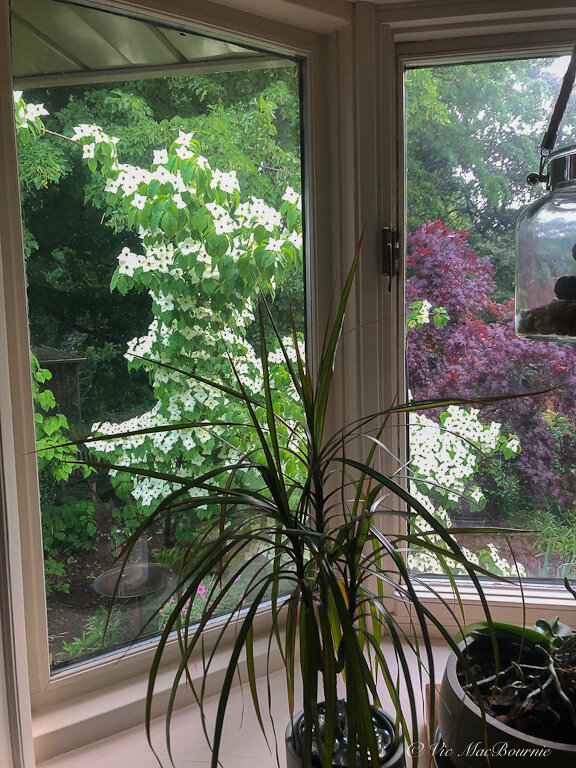
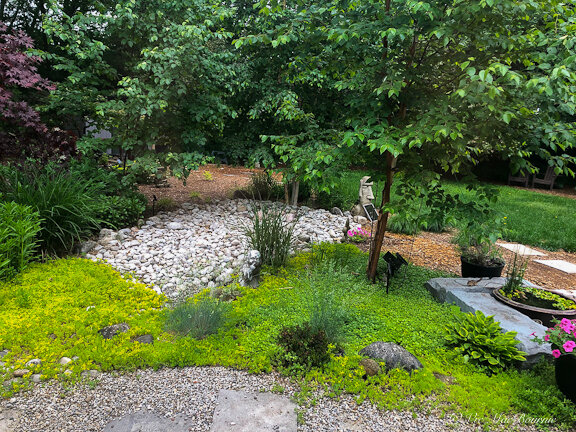
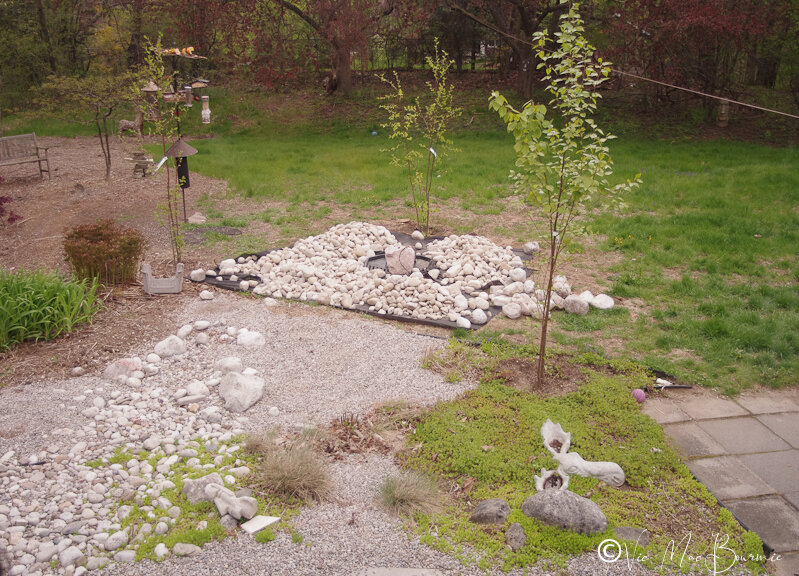
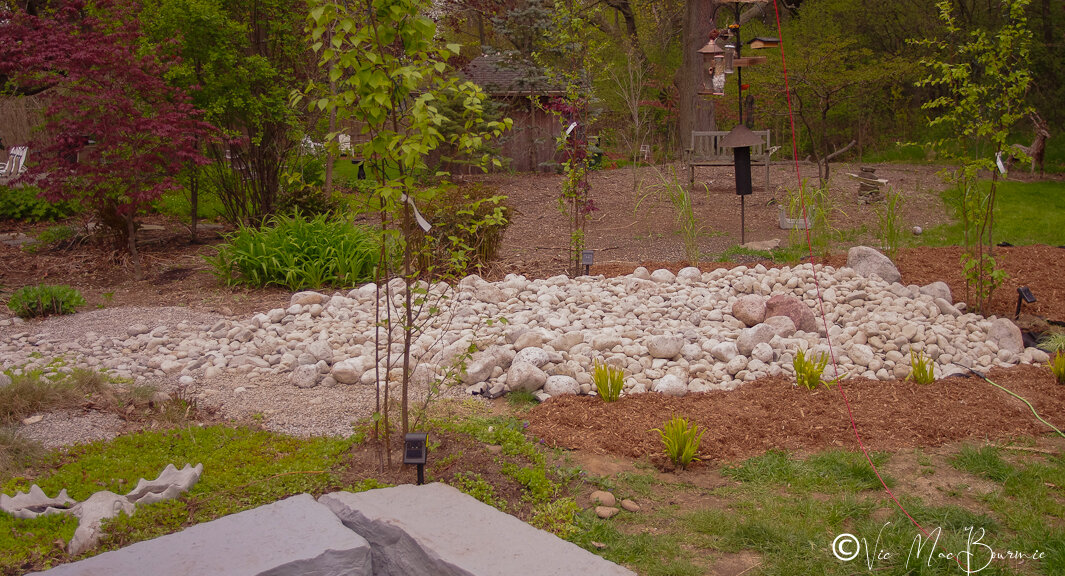
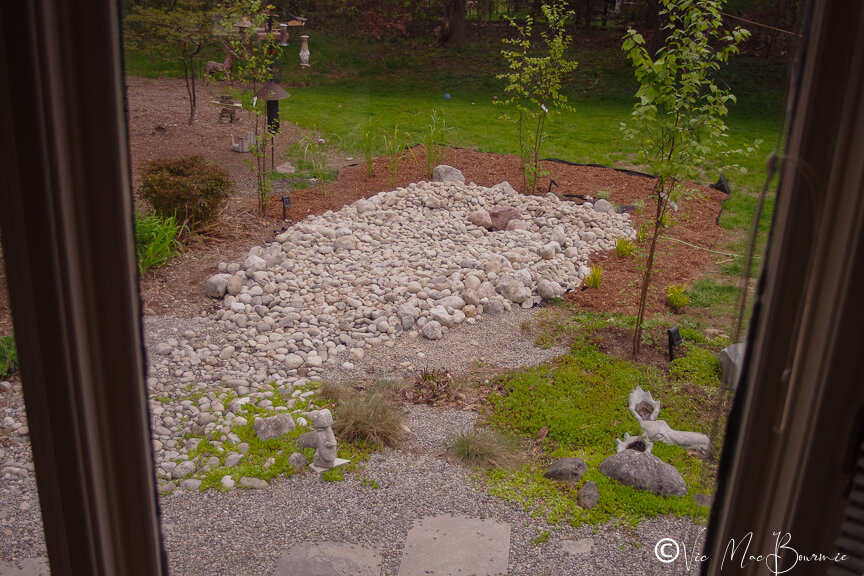
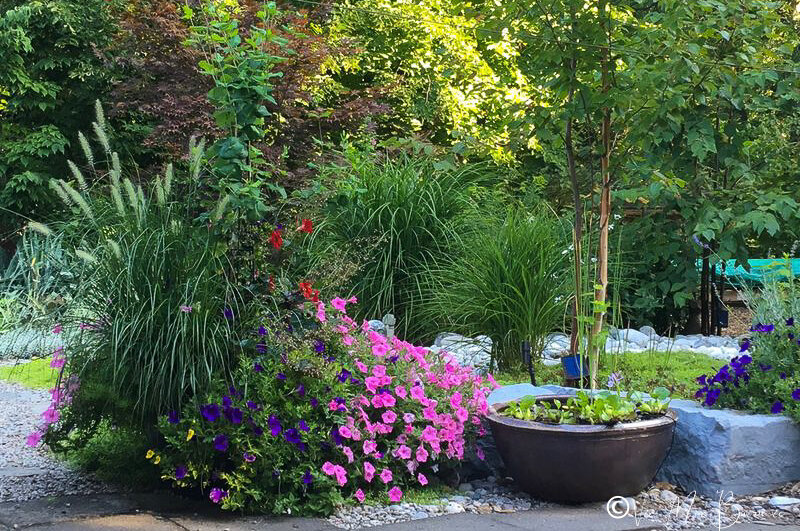






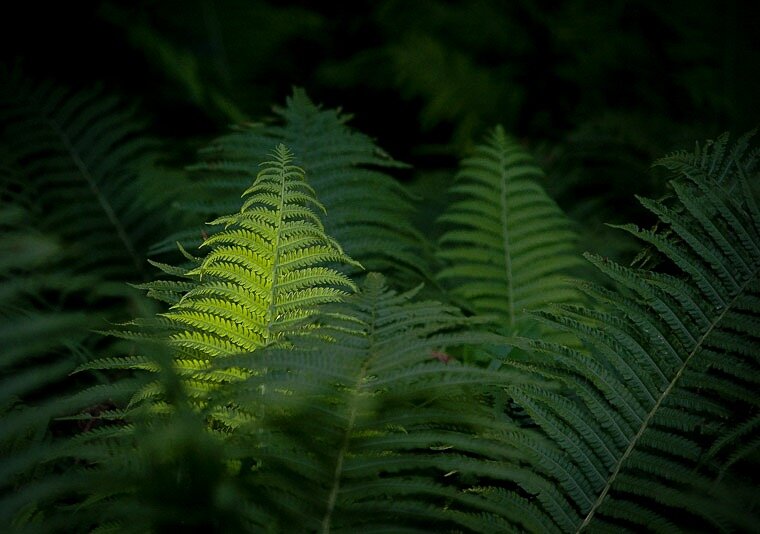


Creating a woodland/wildlife garden using native plants has many benefits including being able to photograph the wildlife that lives in and visits your backyard.